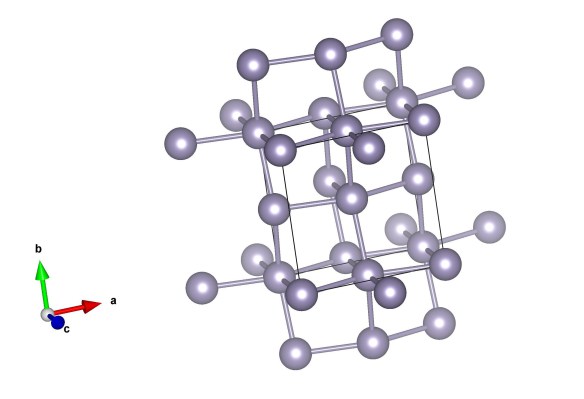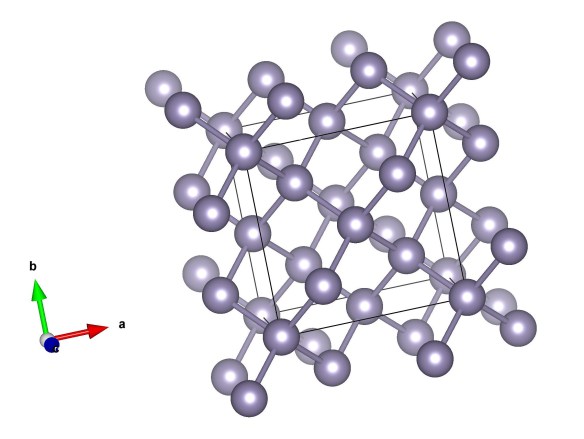A failed campaign – alpha and beta tin
What does it look like?

'White' or beta tin: the structure of tin at room temperature. Image generated by the VESTA (Visualisation for Electronic and STructural analysis) software http://jp-minerals.org/vesta/en/

'Grey' or alpha tin: the structure of tin at temperatures below -40 °C. Image generated by the VESTA (Visualisation for Electronic and STructural analysis) software http://jp-minerals.org/vesta/en/
What is it?
When Napoleon's armies marched towards Russia in June 1812, they were freshly kitted out with new uniforms, weapons and provisions, full of confidence in their future success in conquering to the East. Yet later that year, the bedraggled remains of this army limped back to France, heavily defeated. There were many reasons why Napoleon's army failed in their conquest, but a quirk of crystal structure can't have helped. The uniforms of the Napoleonic army were held together by tin buttons, but in the protracted cold temperatures of the Russian winter these buttons started to crumble. The reason? What is often referred to as 'tin pest'.
Tin pest is in fact a change of crystal structure of the tin itself. When temperatures drop towards -40 °C the metallic 'white tin', known also as beta-tin, will change to 'grey tin' or alpha tin. The atoms within the alpha tin are co-ordinated, like carbon in diamond, to four other tin atoms making the material brittle. As the French army strove through the Russian winter and temperatures dropped, so their buttons would have started to crumble.
Where did the structure come from?
The structures of alpha and beta tin have been determined and both structures can be found in the Crystallography Open Database, #9008568 and #9008570.






